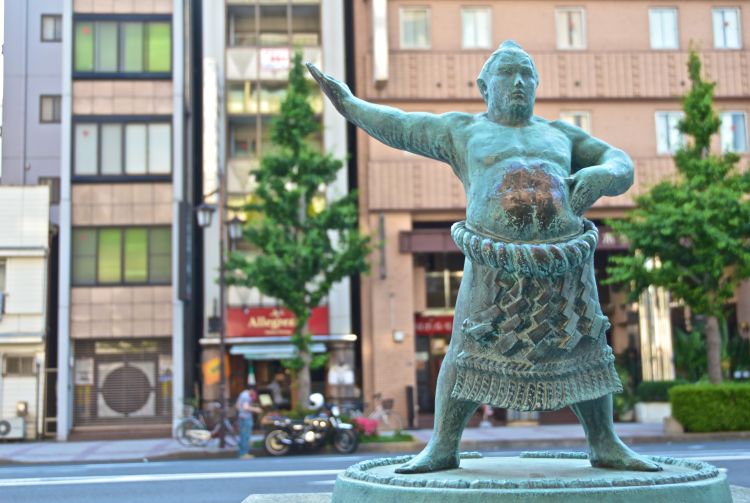This home of sumo is also famous for its retro charm
While this Tokyo neighborhood is renowned for its connections to Japan's national sport of sumo, Ryogoku is also home to several fantastic museums, gardens and traditional shopping streets.
Don't Miss
- The chance to watch a sumo tournament, or at least catch a glimpse of a wrestler
- Modern museums among traditional houses
- Praying at the shrine of the god of scholarship
How to Get There
Ryogoku Station is located on the Toei Oedo Line and JR Sobu Line and is easily reached from many places in the capital.
It takes 13 minutes from Tokyo Station (including a change at Akihabara) and 22 minutes from Shinjuku-Nishiguchi Station.

Dive into the sumo lifestyle
Ryogoku is synonymous with sumo. The imposing Ryogoku Kokugikan sumo stadium dominates the landscape, and the neighborhood is filled with sumo stables and restaurants serving chanko nabe, the delicious, filling and surprisingly healthy stew that is a big part of the wrestlers' diet.
As you explore, keep an eye out for the oversized athletes, whom you may see walking around dressed in kimono with their hair styled in the traditional topknot.

Three times a year—January, May and September—the Kokugikan hosts national tournaments, bringing in thousands of fans and lighting up the whole neighborhood with excitement and anticipation. Tickets often go fast, so keep an eye on the official website if you're planning to go.
The stadium contains a sumo museum , which is free to enter on non-tournament days and features an extensive collection of sumo-related items that changes six times a year.

Japanese culture, from Edo to the ultramodern
Just a short walk from the stadium, the Edo-Tokyo Museum is a great place to learn about the past of Japan's capital. The incredibly detailed dioramas, reconstructed buildings and popular art truly give you a sense of what daily life was like for Edo citizens.

Nearby you will find the Sumida Hokusai Museum , dedicated to the life and art of Japan's most famous ukiyo-e woodblock print artist.

The Museum of Contemporary Art Tokyo is a perfect palate cleanser after getting your fill of traditional art and culture, with a vast collection of works created by Japanese and international artists from 1945 to the present day.

Seasonal beauty in Ryogoku
Dedicated to the god of scholars, Kameido Tenjin Shrine is particularly striking during the plum blossom and wisteria seasons in February-March and April-May. Stop by to admire the elegant red bridge and perhaps pray for a little wisdom while you are there.

The hanging wisteria at Kameido Tenjin
Ryogoku boasts two lovely 19th-century Japanese gardens, both offering a pleasant spot to sit and take a break while sightseeing. Kiyosumi Gardens is filled with landscaped rocks and a miniature version of Mt. Fuji, while Kyu-Yasuda Teien Garden is known for its unusual pond, shaped like the Japanese character for heart.

Kiyosumi Gardens
































































